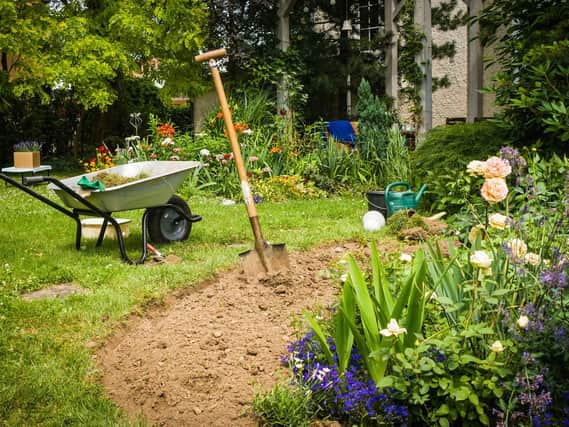BRIAN KIDD: Ensure your life will always be a bed of roses...


It's been cold and wet and we were getting fed up. But a short walk in the garden made me feel more cheerful. Our little robin follows me everywhere and eats out of the seed pot as I pour it into feeders.
Daphne, Roger and Alison, all new to gardening, asked me to write about planting roses. So here we go...
Advertisement
Hide AdAdvertisement
Hide AdNearly everyone loves them and this is a good time for planting. Soil needs to be dug to the full depth of a spade. Make the job easier, especially if it's a new bed, by using a sharp spade or edging iron to cut the edge of the grass neatly. Use a sharp spade to skim off weeds over about a foot wide of ground. Put to one side. Take out a trench a foot wide where the weeds were '“ and to the depth of the spade '“ and put the soil in a wheelbarrow or on a groundsheet . This will enable weeds to be tipped into the base of the trench with some well-rotted compost or manure..
Bury all green parts of the weeds and remove suspicious white roots and knobbly roots of couch grass. Dandelion roots must also be removed. Put the weeds in the base of the trench once the last row is completed and leave the soil rough to allow the surface to dry. The soil's surface should be raked a few hours after digging for an even surface.
You'll need three HT or floribunda roses per square yard. Plant them an equal distance apart choosing varieties which are perfumed of course! Plant so the roots can be spread out. Often they are bent to get them into the bag. Plant so the soil mark on the stem is a little lower in your bed.
Pruning hard is essential. Each stem must be cut back leaving only three buds on each.
Advertisement
Hide AdAdvertisement
Hide AdChoose an outward-pointing bud at the tip of each shoot. Do this and every rose will grow well. Once planting is complete, scatter rose fertiliser on the soil's surface '“ about four ounces a square yard followed by a teaspoon of Epsom salts to fight black spot disease.
Use small labels and write names in clear capitals with a permanent marker. Also put the names in a book to remember them if a friend wants to copy you.
Want to replace dead roses in a rose bed? This is not always successful because of a disease known as soil sickness. But there is a way around this.
Take out at least a gallon measure of soil where the new rose will be planted. Dig out soil from another part of the garden and mix four ounces of rose fertiliser in the fresh soil. Use around the roots of the new rose.
Advertisement
Hide AdAdvertisement
Hide AdIn the parks department, when we replanted an entire bed, 15in of soil was removed and fresh soil or loam imported. In your garden, you're doing the same thing on a smaller scale.
THIS WEEK'S TOP TIP
If you enjoyed potted hyacinths indoors and the flowers are fading, keep the compost moist but when the flowers turn brown, remove them but leave the green stem. Plant the whole group in the garden straight away, don't wait until the leaves die off. If you do this without breaking up the roots, the bulbs will naturalise. Hyacinths are best not grown indoors in pots again, the quality of the blooms is usually pathetic.
Â